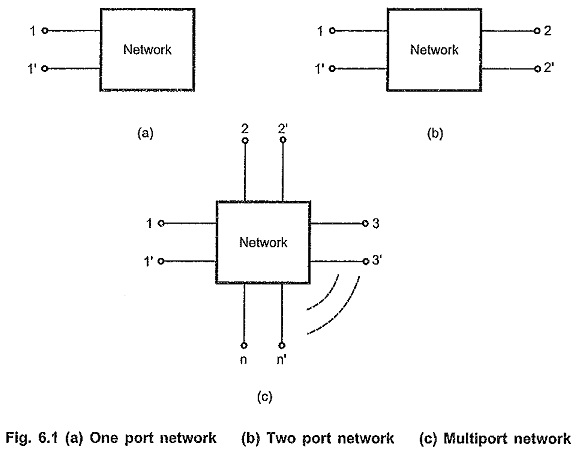Terminal Pairs or Ports:
Terminal Pairs or Ports – A pair of terminals at which an electrical signal may enter or leave a network is called a port. The terminals or port is required for connecting input excitation to the network. It is also required for connecting some other networks such as load. The terminals are most useful for making measurements. In general, the minimum number of terminals required is two.
A network having only one pair of terminals or one port is called one port network. The Fig. 6.1 (a) shows a one port network.
A network consisting two pairs of terminals is called two port network as shown in the Fig. 6.1 (b). The terminals are generally named as 1-1′ and 2-2′ In general, a port designated 1-1′, is connected to the driving energy source while the other port designated 2-2′ is connected to the load.
A port at which energy source is connected is called driving point of the network or input port. A port at which load is connected is called output port.
Fig. 6.1 (c) represents a network with n-port called n-port network. In such networks, generally one port is connected to energy source, one port is connected to load and other ports may be connected to the different networks.
